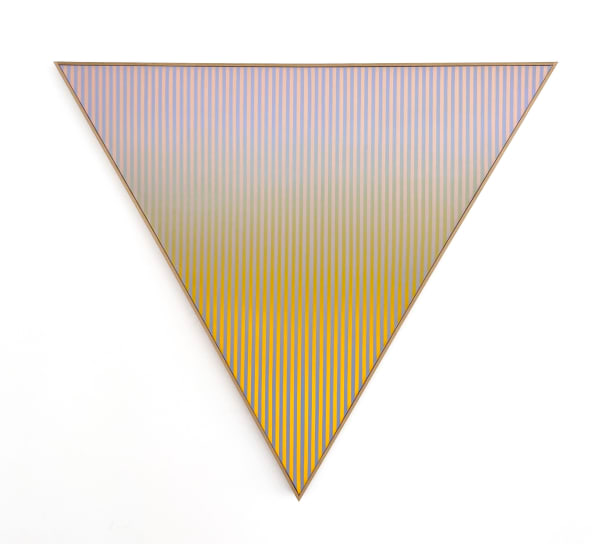Günther Förg German, 1952-2013
Günther Förg (1952-2013) was a prominent German artist whose work encompasses painting, sculpture, photography, and architectural installations. He emerged in the 1980s as a leading figure in the postmodern art scene, leaving a lasting impact on contemporary art history.
Born in Füssen, Germany in 1952, Förg studied under influential artists such as Karl Fred Dahmen and Josef Beuys at the Academy of Fine Arts in Munich. His early works were characterized by a minimalistic approach, drawing inspiration from the aesthetics of concrete art and conceptualism. Förg's exploration of geometric forms and architectural motifs became a recurring theme throughout his career.
Förg gained recognition for his series of "Gitterbilder" (Grid Paintings), which feature grids and stripes painted in bold colors. These works evoke a sense of structure and order while simultaneously questioning the boundaries and limitations of geometric abstraction. Förg's deliberate use of imperfections, such as uneven brushstrokes and smudges, adds an element of human touch and subjectivity to his otherwise rigorous compositions.
In addition to his paintings, Förg also engaged with photography, using it as a medium for capturing architectural details and urban landscapes. His photographs often focus on the relationship between architectural spaces and the human presence within them. Through his lens, Förg explored themes of symmetry, perspective, and the interplay between light and shadow.
Later in his career, Förg expanded his artistic practice to include sculpture and large-scale installations. These works often incorporated industrial materials, such as metal and concrete, and reflected his interest in the modernist architecture of the Bauhaus movement. Förg's sculptural pieces explore spatial relationships and challenge the viewer's perception of form and volume.
Throughout his artistic journey, Günther Förg continually pushed the boundaries of artistic expression. His interdisciplinary approach and willingness to experiment with different mediums resulted in a diverse body of work that defied categorization. Förg's contributions to contemporary art, characterized by his exploration of geometry, architecture, and the relationship between abstraction and representation, have solidified his place in the annals of art history.
-

Gallery Artists
2 Apr - 31 May 2025New works by Gallery ArtistsRead more -

Winter Show
Full House 30 Nov 2023 - 31 Jan 2024Works by Günther Förg Otto Piene Ylva Carlgren Martin Wickström Tom Wesselmann Imi Knoebel Tomas Lundgren Paolo Scheggi Maria Miesenberger Agostino Bonalumi Michael van Ofen Bernard Aubertin Jean-Luc Moerman Florian...Read more -

Summer Show
9 Jun - 30 Jul 2022Imi KnoebelRead more
Tom Wesselmann
Arman
Günther Förg
Dieter Roth
Horst Antes
Anselm Reyle
Magnus Thorén
Olivia Reuterswärd
Hubertus Hamm
Karin Alfredsson
Otto Piene
Günther Uecker
Dadamaino
Agostino Bonalumi
Turi Simeti -

MULTIFACETED
works from 1960 - 2021 17 Nov 2021 - 27 Feb 2022In our inauguration Exhibition of our new space, we are showing a wide range of works and artists working in multifarious styles and diverse media. The period extends from 1960...Read more
-

Abstract - Concrete
Group Exhibition 1 Nov - 23 Dec 2019Works by Otto Piene Walter Leblanc Gerhard Richter Imi Knoebel Günther Förg Turi Simeti Magnus Thoren Anselm Reyle Etinne ViardRead more -

Summer Show
21 Jun - 31 Aug 2016Amselm Reyle Robert Barry Diango Hernández Jean-Luc Moerman Magnus Thoren Rita McBrite Günther FörgRead more









